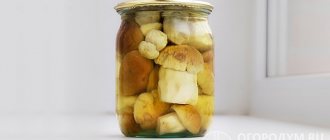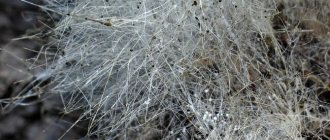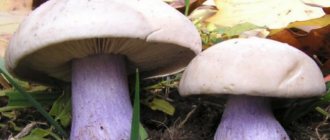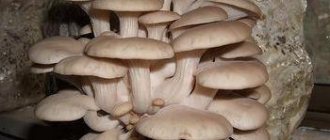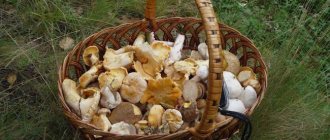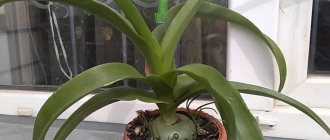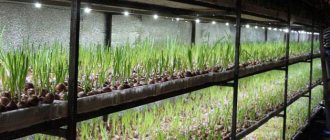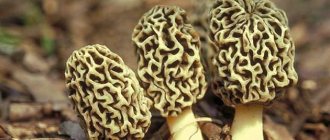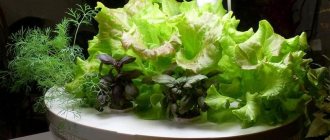Methods of growing mushrooms
To get a great harvest, it is important to properly breed mushrooms at home. There are several options:
- Planting mycelium. A special seed preparation is purchased. You need to make a hole on the site. Sawdust and leaves are placed at the bottom. The package with seeds indicates the area that needs to be sown with fungal spores. The seeds are taken out of the package, mixed with a special growth activator, as well as nutritious soil (chernozem). After sowing, the mycelium must be thoroughly watered, covering the soil with fallen leaves.
- Planting mushroom seedlings. Pieces of mushrooms are soaked in water for a day and then planted in the ground. This method is suitable for growing wild mushrooms. The seedlings are introduced into the soil under the tree. It is watered generously with the same water in which the mushroom pieces were soaked.
- Transplanting a tree with mycelium in the roots. A suitable specimen must be found in the forest. This method is labor-intensive and therefore rarely used.
For beginners, it is better to choose the first method. Over time, you will be able to try other techniques.
How to grow boletus mushrooms in the country
Temperature and humidity conditions are far from the only condition for successfully growing boletus mushrooms in the country. Since in nature these mushrooms are found mainly in pine forests, birch, oak and aspen groves, you should try to reproduce similar conditions at home.
Note: The choice of wood plays an important role because it is the tree species mentioned above that have a positive effect on the growth and development of the mycelium.
It is advisable to plant in those areas of the site where similar trees grow. Preference should be given to coniferous species, since they not only promote the development of mycelium, but also have an antiseptic and antibacterial effect, destroying pathogens.
It is important that the boletus mycelium does not tolerate proximity to fruit trees and does not take root at all. Therefore, if there are no oaks, aspens, pines or birches on your site, simply place the mycelium near any wooden building, preferably from coniferous trees. Naturally, you can’t count on huge harvests in this case, but you will be able to collect enough boletus mushrooms to eat.
Optimal conditions
Regardless of which method you choose to grow mushrooms, it is important to provide optimal conditions for the crops. The main requirements are the following:
- Mycelium should be planted in open ground from April to September.
- A suitable place on the site should be in dense shade.
- In the spring, a growth activator is added to the soil.
- The mycelium should be planted early in the morning or in the evening after sunset.
- You cannot plant mushrooms closer than 50 cm from the tree trunk.
- When the mycelium begins to actively grow, it needs to be watered abundantly.
Oyster mushrooms
This mushroom can even be grown indoors, for example in a garage, cellar, basement. The harvest can be harvested all year round. The room is pre-treated with a four percent lime solution. It is closed for 2 days and then ventilated until the smell disappears completely.
There should be two rooms in the room. In the first one the mycelium will germinate, and in the second one the mushrooms should be grown.
Now we need to prepare the ground. It may consist of sawdust, sunflower seed husks, ground corn cobs, and straw. You will also need to add one or more types of compost here. The soil mixture is soaked in warm water for 30 minutes. The liquid is drained and the substrate is squeezed out. Then it is poured with boiling water for 7 hours and left under pressure. Then the liquid is drained again and the soil is squeezed out. Limestone, gypsum, superphosphate and urea are added to it.
The finished wet substrate is poured into a plastic bag, in which small holes with a diameter of about 2 cm are made. A distance of approximately 20 cm is maintained between them. Mushrooms will grow through these holes.
The soil must be poured into the bags in a certain order. First, make a 15-20 cm layer of nutritious, moist soil. Mycelium is laid out on it, which should fill the space of the bag by 2/3. He is tied up and taken to the first room. It is best to hang the bags from the ceiling, but you can also arrange them in rows.
The temperature in this room should be approximately 24°C. In this case, the temperature in the bags should reach 28°C. The air should be very humid, almost 95%. Mushrooms sprout in the dark.
Myceliums need to be ventilated periodically. As soon as the mycelium begins to germinate, the bags are transferred to the second room. Here you need to provide a sufficient amount of oxygen. The humidity should be as high as in the first room, but the temperature decreases. It ranges from 12 to 18°C.
In the second room, artificial lighting is created (fluorescent lamp). Daylight hours should last 12 hours. When the mushrooms begin to sprout, the holes need to be widened. 8 days after the first small oyster mushrooms appear, the first harvest can be harvested.
How to prepare a basement or greenhouse
First of all, the basement must have a concrete floor, the room must be insulated and protected from external factors. To provide illumination to growing fruits, it is necessary to turn on the lamp for several hours a day. The light should be dim, diffused and evenly illuminate all the “beds”.
The basement must have ventilation. It can be natural, but if that is not enough, you can supplement it with fans and air purification filters.
To make it easier to navigate temperature and humidity indicators, a thermometer and hygrometer are installed in the basement. You can increase humidity by spraying the floor. If the basement area is too large, then it can be divided into several parts. So, in one part there will be seedlings, and in the second - grown fruits.
Before planting mycelium or spores in the basement, it is thoroughly disinfected, for example, using a formaldehyde solution. After these procedures, the basement is thoroughly ventilated.
In order to prepare the greenhouse, first of all, the film is painted over from the inside with a chalk solution or covered with dark agrofibre on top so that the lighting of the fruit is poor. Drip irrigation is most often used to maintain moisture levels in greenhouses. A hygrometer is installed to determine the humidity level.
Growing mushrooms in a greenhouse
To maintain a constant temperature in greenhouses, you can install a stove or fan heater, and also hang a thermometer in order to always know the temperature. The boxes with myceliums are not placed on wooden shelves, which need to be built first.
Champignon
These mushrooms require virtually no sunlight to germinate. They are also undemanding, like oyster mushrooms, and can even grow near fruit trees. An important condition for growing champignons is the use of soil rich in organic components.
To prepare the soil mixture, you need to prepare 12 kg of gypsum and lime, 50 kg of cow or horse manure, 20 kg of straw. The ingredients are thoroughly mixed to form a pile. It is watered with water and compacted tightly. The mixture is covered with plastic wrap, leaving it for 2-3 weeks. The ammonia smell should completely disappear.
Now you need to dig a trench 30 cm deep. It is filled with the prepared substrate. The soil is watered with plenty of water. The mycelium is placed in a trench. It is covered with straw. The ambient temperature should be around 20°C.
The soil on which the mycelium grows is moistened, but not compacted. The harvest can be harvested in just 2 months.
Porcini
There are several methods for growing porcini mushrooms. But it’s better to start this work after trying to grow oyster mushrooms or champignons. Porcini mushroom is grown using the following methods:
- transfer;
- planting the finished material;
- seedling.
This procedure is performed from May to October. Work is carried out only after sunset.
Before planting this mushroom in the soil, it is advisable to disinfect it. This will avoid the death of the mycelium due to harmful microorganisms that may be in the soil. A simple recipe is used for disinfection.
You need to brew strong black tea. To do this, pour 100 g of tea leaves into a liter of boiling water. When the tea has steeped and cooled, water the soil with it.
You can also use oak bark for these purposes. 30 g of dry material is poured into a liter of water and boiled for an hour. The evaporated volume of liquid must be periodically topped up. This product is also used to water the soil after the infusion has cooled.
Premises requirements and necessary equipment
You can even place your small plantation of porcini mushrooms at home on the windowsill. But a free greenhouse, greenhouse, basement, cellar, loggia or garage are best suited.
The room does not have to be large. You can start producing mushroom delicacies for home use on a couple of square meters. If you plan to earn additional income from growing porcini mushrooms, then you will need a room with an area of at least 10 m2.
Boletus mushrooms are sensitive to pathogenic microorganisms. Therefore, the growing area must be prepared in advance. It is best if the walls and floors have a smooth surface. This makes them easier to process and maintain the necessary sanitary condition. The walls and ceiling can be covered with plywood, fiberboard, plasterboard or simply whitewashed. The floor is best covered with linoleum or tiled.
Important ! It will be more difficult to organize the cultivation of porcini mushrooms in a greenhouse, since it is difficult to achieve an optimal microclimate in it. However, in the southern regions this is quite possible.
Before planting porcini mushrooms, the room must be disinfected, including the walls and ceiling. This will protect you from crop losses due to mold, germs or pathogens.
To disinfect the room you can use:
- sodium hypochlorite (“White”);
- ready-made complex preparations (for example, “Bianol”);
- bleach solution (prepare yourself).
Sanitary and hygienic measures must also be carried out during the cultivation of porcini mushrooms in order to prevent the development of infections. When the processing is completed, the growing conditions necessary for boletus mushrooms should be created.
To obtain stable yields and prevent losses, you will need to provide the following conditions:
- ventilation (removes carbon dioxide, promotes the flow of clean air, removes spores and pathogens);
- heating (ceps are sensitive to temperature conditions and exhibit the greatest growth at temperatures from 18 to 28°C);
- lighting (it is best to install fluorescent lamps; it is enough to turn them on for 3-5 hours a day);
- humidity (ceps produce the highest and most productive harvest at 40-60%).
Ventilation systems should be selected according to the area. Air ducts and exhaust hoods should be located along the lower edge of the room, otherwise the accumulation of porcini mushroom spores can cause harm to health.
To maintain optimal room temperature and quickly regulate it, you can use a split system at home. In order to save energy, gas heating can also be used. But it will not quickly change the ambient temperature.
Lighting should be distributed around the entire perimeter of the room for growing mushrooms. Until the shoots appear, the mycelium is comfortable in the dark. But when the first shoots appear, dim lighting is necessary for 5 hours.
Throughout the entire growing period, mushrooms require high humidity and moderate watering. If there are few seedlings, you can get by with manual spraying from a spray bottle. For large areas it is better to install a drip system. Just remember that when growing porcini mushrooms, you need to water them with water at a temperature of at least 18ºC.
In the room for the substrate with mycelium, it is necessary to make metal shelves in 2-3 tiers and cover them with antibacterial paint.
Important! If you are planning to organize a home business for growing porcini mushrooms, it is better to purchase specialized equipment that fully controls the microclimate. Residential premises must be separated from production premises.
Transfer
If you decide to grow mushrooms by transplanting, you need to dig up the mycelium and then plant it in the ground where deciduous or coniferous trees or shrubs grow. You need to dig up planting material from the same tree where you plan to plant the porcini mushroom.
In front of the selected tree, at a distance of 50 cm from the trunk, you need to dig a hole 30 cm deep. Fallen leaves and sawdust are laid down. A layer of soil is poured onto them, on which the dug mycelium is planted. The soil is watered abundantly. The top of the spores should be covered with leaves. Watering is carried out in the first 2-3 weeks.
Features of the type and useful properties
The porcini mushroom is a bright representative of the mushroom kingdom, which belongs to the Boletaceae family and the boletus genus. The boletus got its name because even after heat treatment and cooking, its flesh remains white. This variety is quite large in size. The hat is semi-round, has a brown color with a brown tint, and in size, on average, grows to 20-30 cm in diameter, and in some cases it can grow up to 50 cm.
The color of the cap gradually acquires a dark shade, and its surface is velvety and pleasant to the touch. In conditions of high humidity, it becomes covered with a thin mucous film. The leg is fleshy and grows up to 12 cm in height. The consistency is fleshy and juicy, and the shape is barrel-shaped, narrowed in the upper and lower parts. The color can vary, from light brown to dark shades with red spots.
Boletus can be found in almost all latitudes, with the exception of those places where the climate is very dry and hot. This variety prefers forests with sandy or loamy soils. Peak yield occurs at the beginning of June and lasts until mid-autumn.
Planting the finished material
Porcini mushroom mycelium can also be purchased at a specialty store. They also choose a place for it near a tree. It must be damp and dark here. Stepping back 70 cm from the trunk, make a hole. Its depth is 50 cm. A mixture of sawdust, leaves and soil is laid out at the bottom. The layer thickness is 20 cm. Next, a 10 cm thick layer of soil is poured, and compost is placed on it.
Now you can plant mycelium. It is sprinkled with earth and leaves. Under favorable conditions, the first harvest will be possible next year.
On a personal plot
When there are sufficiently mature pine, spruce, birch, oak, hornbeam or beech trees on the site, you can use one of the proven planting methods. But it is important to remember that under spruce trees you need to plant those subspecies that are associated specifically with spruce trees, under pine trees - with pine trees, etc. Otherwise there will be no effect from the landing. The first year may not bring a harvest, or there will be isolated mushrooms. Mass fruiting will begin only in the second year. Mushrooms are grown in the following ways:
From dispute
This method is good for those who can pick up several overripe porcini mushrooms in the nearest forest.
They take their caps (even those with wormholes), soak them in a bucket of water and leave them warm for a day. If desired, add 2-3 tablespoons of sugar to the water per 1 liter of water. After a day, the caps are crushed to a homogeneous mass and allowed to stand in the same water for several more hours. Then they are filtered, obtaining a separate mushroom mass and water with mushroom spores activated in it.
In the old days, mushrooms were placed in wooden tubs and filled with settled spring or rain water, but without adding sugar. The optimal time for such planting work is from August to September.
While the caps are soaking, prepare the area for planting. The space around trees with a radius of up to 1.5 m is carefully dug up, removing the top layer of soil of about 15-20 cm. At the same time, the integrity of the tree roots, which play a leading role in the development of the mycelium, is monitored.
Then the strained infusion with spores is poured onto the bare roots, calculating 2 liters of solution per 1 m2 of soil. The mushroom mass remaining after straining is laid on top and sprinkled with soil. Watering will definitely be required, carefully, without eroding the earth. One tree will require about 3-5 buckets of water.
From mycelium
Mycelium has recently been increasingly purchased in specialized stores. But, if possible, it is better to dig up the mycelium yourself, under the same trees and the same age that grow on the site. Dig carefully, without shaking the soil from the mycelium. Planting work can be carried out throughout the warm season.
When purchasing mycelium at a gardening store, you need to pay attention to its condition. Healthy material should have a rich red color, possibly with yellowish splashes. The presence of dark spots, as well as an unpleasant ammonia smell, indicates a spoiled product. Store the mycelium in the refrigerator at a temperature not exceeding 4 °C for no longer than three months.
The landing site is prepared in the same way as described in the previous paragraph. After this, compost from leaves and sawdust is spread on the roots. If the mycelium was brought from the forest, you can put soil taken from under the tree where the mycelium was dug up at the bottom. Pieces of mycelium are placed on top, but no closer than 30 cm from each other. Then sprinkle with earth and water. In the first year, the area with mycelium is covered with straw, spruce branches, and moss for the winter.
From tubular layer
This method requires mature boletus mushrooms, from which the tubular layer is separated, crushed into 2 cm cubes, and then dried for 1.5-2 hours. When the planting material is ready, use a wooden spatula to carefully lift the top layer of soil in the selected area, place 2-3 mushroom pieces there, then carefully lower it and water it.
How to care
The main care for mushrooms is regular watering.
The soil should not be allowed to dry out or become waterlogged. If the summer is dry, the area can be mulched with straw or hay to maintain moisture. But you need to water at regular intervals in equal volumes - 3-5 buckets of water once a week. It's good if there is a drip irrigation system.
To improve germination, experienced mushroom growers recommend using preparations containing cultures of beneficial microorganisms. They significantly improve soil quality, which affects yields. You can feed the plantings with coffee grounds with the addition of a mineral complex. It should be calculated as 1 tbsp. per 1 m2.
Seedling
There is another way to grow porcini mushroom in your area. You need to bring the caps of this plant from the forest. They are finely chopped or grated. You can pass the prepared material through a meat grinder.
The gruel is poured with water and left for a day. Now you need to choose the right place for planting the prepared material.
The soil under the selected tree needs to be dug up. Compost is added here. When the pulp is infused in water, it is poured onto the prepared soil. This place is covered with leaves.
These simple tips will help you grow your favorite varieties of mushrooms. If there are several trees on the site, you can grow a real mushroom clearing. It will be a pleasure to relax here. If desired, you can grow them in a greenhouse or suitable room. Mushrooms can be collected all year round for yourself or even for sale.
Subscribe to our Telegram channelExclusive posts every week
Substrate preparation
This is another important and at the same time problematic point. External conditions are not as important for mushrooms as the quality and nature of their food source. Of course, ready-made components are already on the market, they are easy to purchase, and there are many offers on the Internet. But it is better to assemble the necessary parts of the substrate yourself.
To do this, take:
- dry grass;
- dried tree leaves;
- small branches, needles;
- some dried moss.
Now chop it all up. Then collect sand and clay (take 4 times less). Sift the sand and combine all the available components. Wait a while (about two weeks), and then use the prepared mixture. Although the best option is to help the symbiosis with some plant to take place, because porcini mushrooms have just such a connection with trees in the natural environment.
